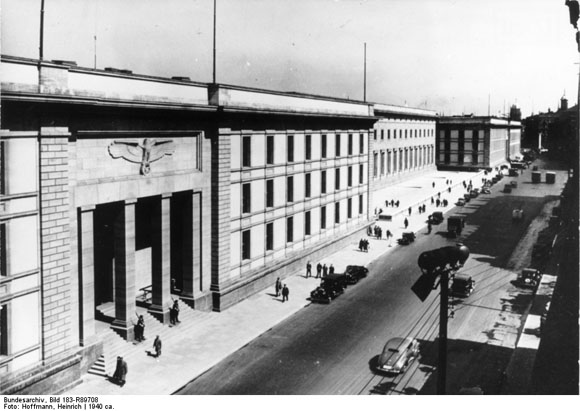Abstract
Albert Speer's Reich Chancellery was the architectural embodiment of
the Nazi dictatorship’s claim to totalitarian rule. The building was
constructed as an annex to the Old Reich Chancellery (and to that
building’s earlier extension on Voßstrasse and Wilhelmstraße in Berlin).
After approximately three years of construction, the new Reich
Chancellery was dedicated in January 1939. The building was 400 meters
long and 20 meters high; this photograph shows the entrance, which was
adorned with four monumental pillars; the Reich eagle (with swastika)
occupies a prominent position above the portal. In addition to Hitler’s
office and apartment, the building included a "court of honor"
for official occasions, a marble gallery and various banquet halls and
ballrooms. In 1943, construction began on Hitler’s bunker underneath the
Reich Chancellery; it was there that he would commit suicide in May
1945.
Hitler actually seldom used the New Reich Chancellery as the seat of
government, since he preferred to reside at his "Berghof" on
the Obersalzberg. The Reich Chancellery survived the war largely intact,
but in 1949, at the command of the Soviet city administration, the
demolition of this symbol of Nazi rule began. Photo by Heinrich
Hoffmann.
